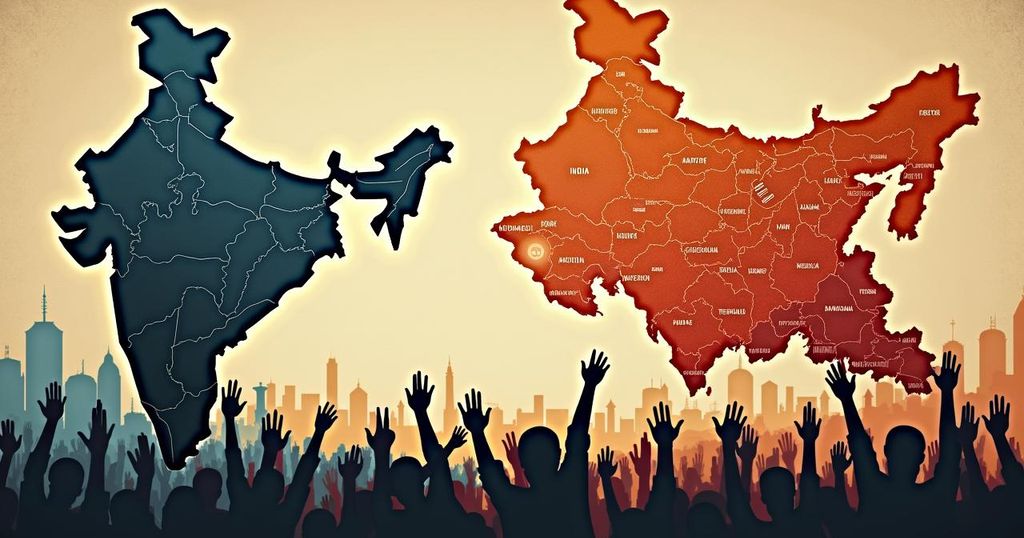During a speech at the UN General Assembly, Israeli Prime Minister Benjamin Netanyahu presented two maps illustrating his view of Iran as a ‘Curse’ and India as a ‘Blessing’. He described Iran’s actions as a terror arc that disrupts stability, while envisioning collaborative progress with India and other nations. Netanyahu affirmed Israel’s right to defend itself against threats and to address misinformation directed against it.
During his address at the UN General Assembly, Israeli Prime Minister Benjamin Netanyahu highlighted the contrasting roles of India and Iran using two illustrative maps. The map portraying Iran, along with Iraq, Syria, and Yemen, was designated as the ‘Curse’ map, depicted in black to signify a perceived arc of terror purportedly instigated by Iran, stretching from the Indian Ocean to the Mediterranean Sea. Netanyahu argued that this malign influence disrupts international commerce, incites internal strife, and causes widespread suffering among populations. Conversely, the map representing India, Egypt, Sudan, Saudi Arabia, and other nations was labeled as the ‘Blessing’ map, illustrated in green. Netanyahu stated that this map reflects a vision where Israel and its Arab partners could establish a land corridor facilitating connections between Asia and Europe via railways, energy pipelines, and broadband communications, ultimately benefitting approximately two billion individuals. He emphasized that Iran’s unchecked aggression poses dangers not only to Israel but also to numerous nations across the Middle East and beyond. By physically displaying the contrasting maps, Netanyahu sought to convey the dichotomy between a hopeful future and one fraught with despair. He underscored that Iran, through its support for terrorist networks globally and its nuclear ambitions, threatens regional stability. While reiterating Israel’s commitment to countering threats from Hezbollah and securing the safety of its citizens, Netanyahu criticized the misinformation he claimed was directed against Israel, stating that it was necessary to address these inaccuracies from the international platform.
The context of Prime Minister Netanyahu’s remarks lies in the longstanding tensions in the Middle East, particularly regarding Iran’s influence in the region and its support of militant groups like Hezbollah. This antagonism reflects broader geopolitical struggles and alliances that have shaped the dynamics of Middle Eastern politics. Israel’s position is heavily influenced by its perception of Iranian activities, which it views as destabilizing; hence, Netanyahu’s address aimed to rally international support against what he characterizes as Iranian aggression.
In conclusion, Netanyahu’s statements at the UN incorporated a stark contrast between his views on India and Iran, represented through two maps. He painted Iran’s influence as a pervasive threat, while portraying Israel’s potential partnerships with Arab nations as a source of hope and progress. His rhetoric aimed not only to inform but also to mobilize international opinion regarding the present geopolitical challenges in the region, as he reinforced Israel’s resolve to counter Iran’s activities.
Original Source: www.livemint.com






